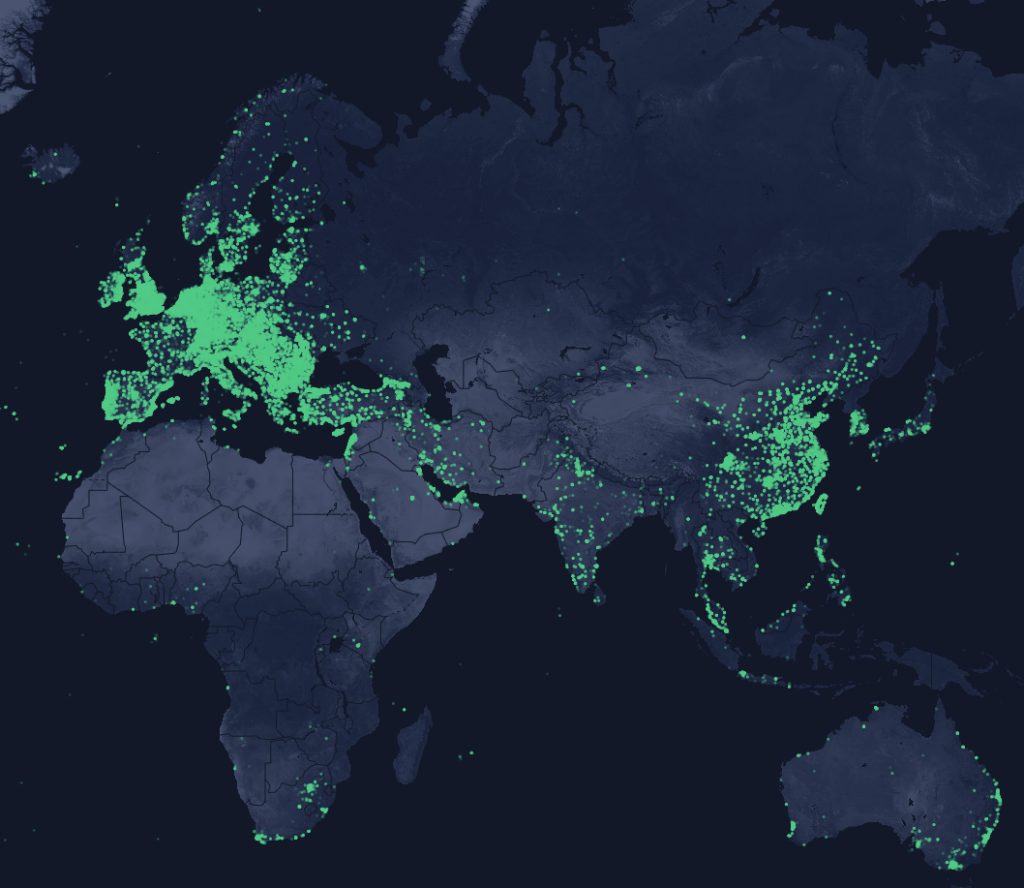
Summary
- A large decentralized wireless infrastructure to run Internet of Things (IoT) and 5G networks, Helium enables devices anywhere in the world to wirelessly connect to the Internet or smaller networks without direct use of satellite location hardware or cellular plans.
- Helium uses blockchain and tokenomics to encourage people to own and install hotspot devices, join the network, and offer network auditability and proof of coverage.
- Check out more examples of crypto in action.
Helium Project Goals
Helium aims to create decentralized networks of wireless infrastructure using IoT and 5G devices and networks with lower deployment costs and faster deployment speed than traditional networks. Crypto helps to distribute the decentralization and the incentives to maintain the network and provide coverage. This is done by:
- Paying tokens to people who provide network coverage.
- Paying tokens to people who verify that the hotspot providers are providing coverage.
- Offering auditing tools and tracking information on chain so that everyone outside of Helium can verify that the system is working.
While the project does not have a stated goal of creating wealth for individuals, it lowers the barriers to acquiring wireless infrastructure, deploying it, and participating in revenue sharing.
Helium Implementation Strategy
Since 2019, Helium has had its own blockchain that’s used, in part, to reward native HNT tokens to participating hotspot owners who provide Proof-of-Coverage. This differs from traditional telecommunication companies, who own the hardware required to deploy service and lease or own the land required to house it. With decentralized infrastructure, anyone can purchase the required hotspot devices to provide internet coverage or mobile coverage within the Helium network.
At first, only a handful of manufacturers provided the hotspot devices. Since governance token holders approved proposal HIP 19 in 2020, the community can vet and approve more manufacturers and vendors, which further decentralizes the provision of devices.66 67 As of this writing, 26 approved manufacturers sell 5G and/or long range wide area network (LoRaWan) hotspot devices to Helium participants.
People or organizations interested in providing coverage must purchase one of these devices, install them, and run them using service from existing internet or 5G providers. This establishes smaller networks and extends coverage in hard-to-reach areas.
Helium provides a coverage map for people interested in providing network service. It shows current hotspots in the network, the token income hotspot owners have received in the past month, and how many competitors someone would have if they join a network in the same area.
Policy & Industry Considerations
When the Helium 5G network gets deployed more extensively, it may expand internet coverage in rural or isolated areas. Lower initial costs for equipment and installation—plus the distribution of investment risk among the individuals and corporations who have bought and installed the devices—help make this possible. This coverage can contribute to increased internet adoption and mobile service subscriptions, allowing more people to work remotely and access new types of employment.However ISPs are not obligated to follow net neutrality principles in the United States, which means that ISPs could take action to block or throttle connections to the Helium network. If that happens, it could affect Helium’s ability to expand its coverage areas.
With decentralized infrastructure, IoT hotspot owners rely on wireless service they must acquire themselves. This makes the role of ISPs and net neutrality principles even more relevant to Helium’s future.
Helium’s growth path also relies on FCC licensed equipment running on unlicensed bands: radio frequency bands that can be used without filing directly with the FCC. Companies such as this one can thrive amid major telecommunication firms by using these bands. However, the telecommunication band regulation varies from country to country, and licensed bands are highly regulated and costly to acquire and operate. Helium considers the regulatory factor cost before exploring other markets outside of the United States for its 5G network. Helium’s IoT networks are unaffected by this limitation, and there are almost a million hotspot devices scattered around the globe.
Regardless of where or when Helium expands, the network will take on additional liability as it takes on more participants. When individuals and new firms enter the industry of infrastructure provision, they might not realize the depth and breadth of their possible obligations. Last-mile providers would benefit from regulatory clarity around the liabilities they face vis-a-vis their networks’ consumers and providers.
Business Data
Status: Active – in-market
Technology: Helium / Solana blockchains. LoRaWan / 5G
Location: California, United States.
Constituency: Enterprises and users of last-mile infrastructure. There are more than 967,000 hotspots distributed in 162 countries. Forty percent of the devices are located in the United States, while Germany, Canada, and the United Kingdom account for 6 to 7% each. 5G currently only in the United States.
Entity: Nova Labs Inc.
Business model: Network usage fees from industrial and commercial clients. Partnerships with telecommunication providers.
Financing stage: Series D
Resources and references
Website: https://www.helium.com
Additional Resources: Helium Dashboard
This article originally appeared in the January 2023 Income and Wealth Creation in Web3 Report by the Crypto Research and Design Lab (CRADL) – a research organization committed to objectively documenting people, organizations, and activities in the crypto ecosystem and their impact on the broader industry.

























